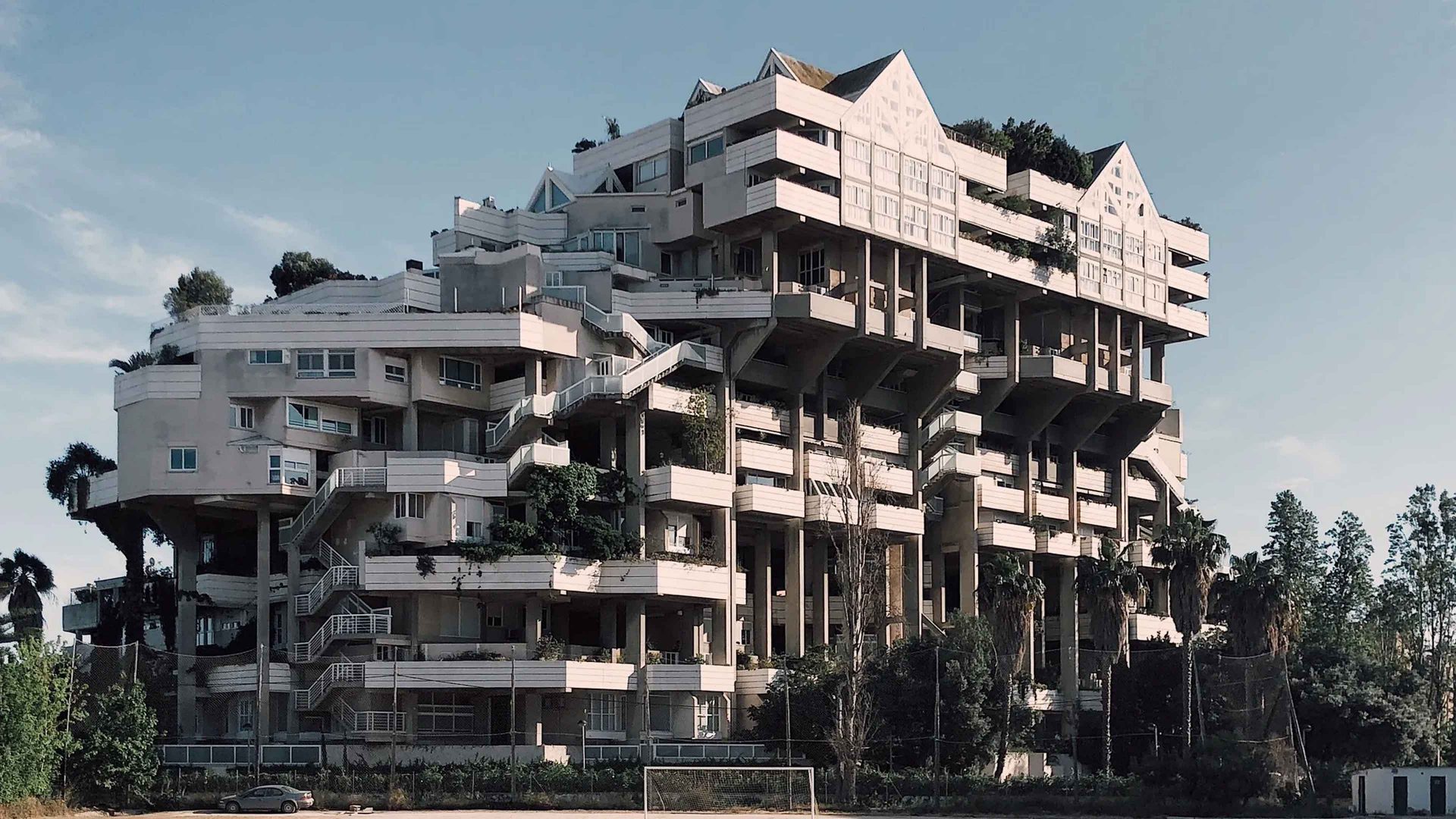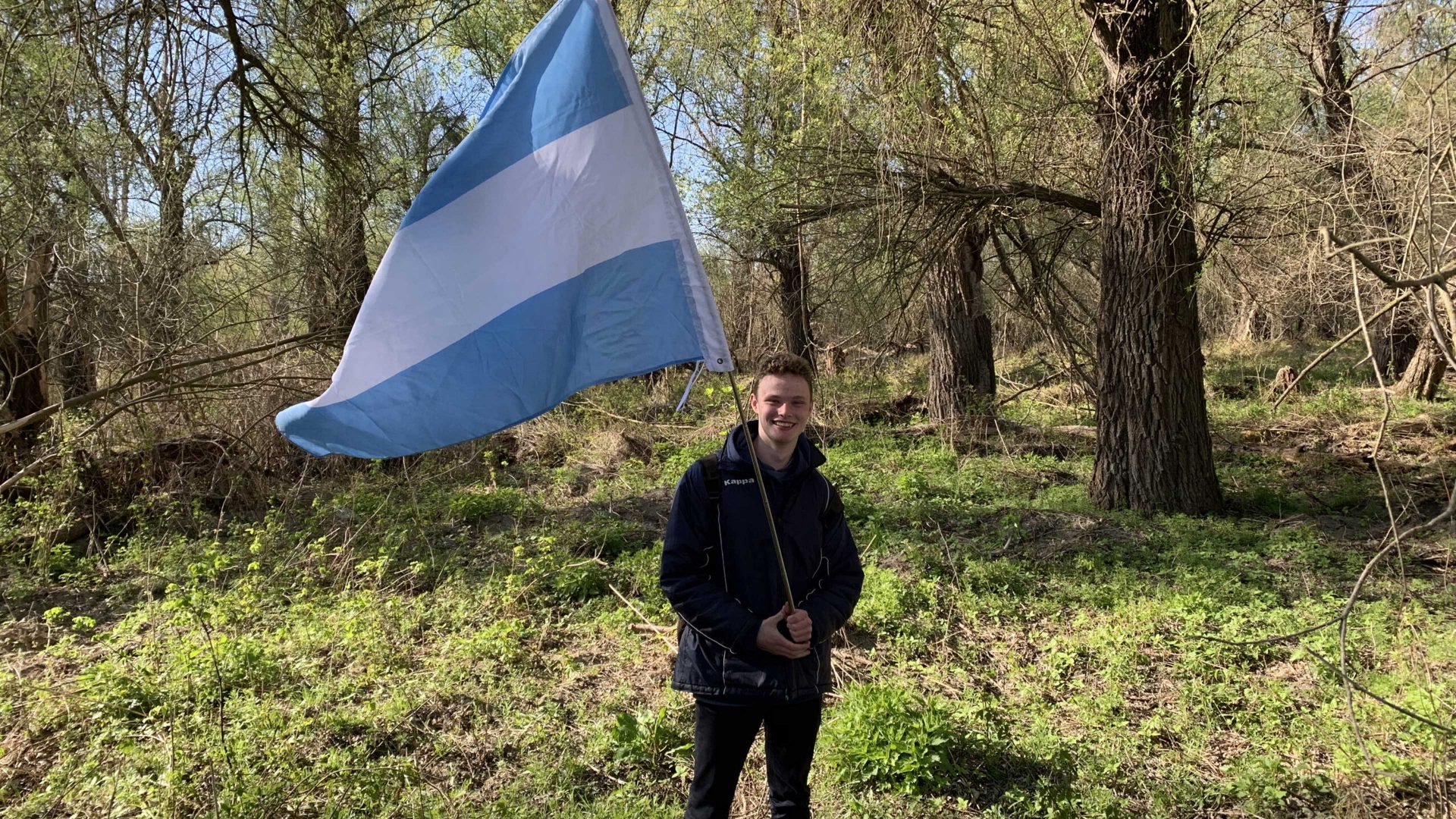On the outskirts of Valencia, where the city flattens out and unfolds into farmland, a brutalist building stands alone, offset from the motorway. The off-white shell stands out against the sky, and the structure is blocky and asymmetrical, lopsided against the rows of apartment blocks in the distance. Beyond lies la huerta – the orchard – and Valencia’s dusty patchwork of allotments and vineyards, the rice fields, the olive and orange groves.
As I approach, the building itself seems overgrown, as though abandoned and slowly engulfed by nature. Cacti poke their heads out of hollow spaces and inner courtyards. Splashes of colour and greenery sprout from the concrete megastructure – there are palm trees and ivy, patches of moss, flowers, ferns growing across the facade.
The Espai Verd (literally meaning “green space” in Valencian) is a housing cooperative designed by Alicante architect Antonio Cortés Ferrando. Finished in 1994, this odd building has been described as futuristic, utopian, ecological, even an “urban cathedral” or example of “bioclimatic architecture”. In short, Espai Verd is a structure where urban and natural worlds meet, merge and coexist with one another in a single space.
The looming scale, its long concrete pillars and staircases, give the feel of an airport or sports stadium in the early stages of construction. Halfway up the building, two mammoth palm trees stand in a pair, their loose brown bark swaying in the breeze, and I wonder how the building doesn’t topple over.
I make my way around to the other side. There’s a dusty football pitch, an allotment. Midday sun gleams in the glass, and bridges and walkways jut out at strange angles, casting shadows on the street below. A web of plant roots clings to the undersides of balconies like electrical cabling. An elderly woman glares suspiciously, then returns to her gardening, gloved fingers appearing and disappearing over the edge. A cat stands up from the shadows and stretches, resettling in a pool of sunlight.
Cortés Ferrando reportedly got his blocky, brutalist inspiration in part from the Walden-7 building in Catalonia, as well as Moshe Safdie’s extraterrestrial-looking Habitat 67 in Quebec. Espai Verd is also tiered and blockish – some parts of the building reach 15 storeys, others just five – and this asymmetry gives the impression that the building itself is somehow growing or changing shape and form, as though it were computer-generated or a game of Tetris rising into the sky.
The design was so ambitious that Valencia’s municipal planning rules were modified for it to be rotated at a 45-degree angle to the rest of the city’s grid. This allowed the various trees, gardens and allotments to get sufficient sunlight in the morning, while providing enough shade to avoid the hotter Mediterranean afternoons.
Neighbours come and go. Dog walkers stroll the gardens. At one entrance, a postman holds the door open and I step into the sounds of birdsong and running water. Passing the empty concierge desk and heading along a short corridor, the courtyard opens up into a blur of daylight. A huge waterfall dominates the space, trickling its way down different concrete levels until it flows into a mossy pond.
All around are balconies and bridges and walkways and staircases hidden in the shrubbery, going this way and that, absorbed by nature. A poster identifies the more than 20 types of bird that frequent the Espai Verd’s inner ecosystem. A steep hill takes me to another level at the back of the building and there are greenhouses, a pool, views of the sea and of the city skyline in the distance.
Before my visit I read that Cortés Ferrando was also something of an authority on artificial intelligence, long before it became mainstream. And as I walk around – the light rusting, stains and scuff marks in places – I feel that there is something nostalgic about the building’s dated sense of 90s modernity, a retro-futurism, emanating from the construction.
I leave and head towards town. Turning back and looking at it, colossal and incongruous, overgrown, slightly dated and decayed, the Espai Verd appears like an old sci-fi film set abandoned in the desert, or a lost city deep in the jungle – perhaps the remnants of a doomed utopia on some dead, distant planet, overrun by time and nature.
Conor Patrick Faulkner is a freelance writer based in Valencia. His work has featured in the Independent, Guardian and Al Jazeera



